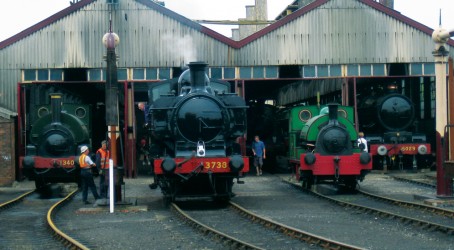Museums
Think of the Great Western Railway and you might think of Isambard Kingdom Brunel, the broad gauge, and the certainty that there were two ways to do things: the GWR way, and the wrong way. From the first lines of the 1830s through to nationalisation in 1948 and a bit beyond, the GWR was a company apart, surviving the late-Victorian downturns and the 1923 grouping with its ethos and distinctiveness intact.
You may still “suffer” a bit of that distinctiveness on the way to the Great Western Society’s locomotive collection at the Didcot Railway Centre in Oxfordshire. Fast, electrified trains still don’t make their way down the GWR mainline; it’s not a fast trip. But beware, if you decide to drive instead, you’ll get directed to a vast car park on the far side of the station – now renamed Didcot Parkway – where they’ll relieve you of about a fiver. And then it’s quite a walk, involving several lots of stairs.

The accessibility is a bit of a shame because, if there’s one generation the GWS collection should appeal to, it’s the older one, the people who remember the last years of steam. Most of the locomotives stored and renovated here are from these latter days – the hero of the place isn’t Brunel, but Collett, creator of workaday tank engines as well as the huge King class and the Castles and Halls, and also, to a lesser extent, Collett’s successor, Hawksworth, who retained some independence for Swindon-built locos into the nationalised era of standardisation.
And it’s very much the locos that are the thing at Didcot. There’s a nice indoor collection of railwayana that reminds you that the GWR was a first-rate dining experience, a shipping line and in some communities a whole way of life. And there’s a section inside an old carriage that does an outstanding job of explaining how steam engines and other engineering artefacts work.
But it’s the locos in the sheds and on two bits of track that are the main attractions. On most days across the summer holidays and on several weekends at other times of the year the GWS will have a couple of locos in steam.
The experience is a pretty authentic one. There’s that smell of steam and hot metal; there’s chaps (mostly chaps, of course) in filthy overalls; there’s grit and grime. For some of us, it’s the true sights and sounds of the 1960s. But only if you really believe that the GWR was God’s Wonderful Railway.